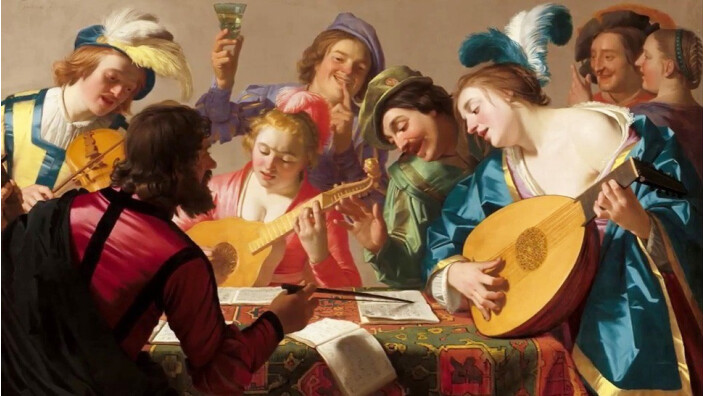In the previous article, I introduced you to modal harmony and recovered, with a slight change of perspective, the concepts of mode, scale and key you saw at the beginning of this series. Before continuing with technical explanations, I thought it would be interesting to put forth some brief historical and philosophical considerations about modes.

A bit of history
Let’s begin with the names of the modes, which might have surprised you by their Greek etymology. In fact, Western music theory has accustomed us to terms with Italian (for so-called classical music) or Anglo-Saxon (for so-called modern music) roots. Well, it just so happens that this nomenclature was cleverly devised by an erudite Swiss man called Heinrich Glarean (1488–1563), aka Glareanus, using… completely arbitrary criteria that have nothing to do with the Greek musical tradition! There, I’ve said it!
It was in 1547 that Glareanus established the organization of notes in twelve natural modes in his Dodecachordon, one of the most important musical treaties of the Renaissance. Today, these twelve modes have been reduced to seven, as you saw in the previous installment. Do note, however, that besides the natural modes, there are also altered modes, which you will see later on. But for now we’ll continue with some history.
Regarding Glareanus, it’s interesting to point out that while the Dodecachordon proposed a very compelling theoretical approach to the Middle Age harmony based on the modal system, the publishing of his work coincided with the emergence and rapid expansion among contemporary composers of the current tonal system based on major and minor scales. This tonal revolution was mainly led by one Gioseffe Zarlino (1517–1590) and his Istitutioni Harmoniche treatise, notably introducing the notion of cadence.
The philosophy of modes
And this period marked a particularly interesting development of things in this regard. As you have seen in all the articles of this series so far, cadence is based on the notion of tension and resolution: the creation of a dissonance which resolves into a consonance, etc. What’s more, tonal harmony relies on a polyphony to which our Western ear is used to. According to this principle, we always expect a melody to be “enriched” with a harmonic construction.
On the contrary, the modal system relies more on melody and rhythm but also, and maybe especially, on the creation of a sonic space which allows suspension without resolution. After the tonal revolution mentioned above came the modal revolution at the dawn of the 20th century.
And you could argue that this modal revolution, very present in modern music such as jazz, rock and pop, was carried out as some sort of revolt against classic harmony. It revisited many of the modal principles of the Middle Ages as well as some codes of folk music, basically tapping into fertile ground that classic harmony had completely abandoned.
But enough philosophy, next week we’ll dive into some more theory!


